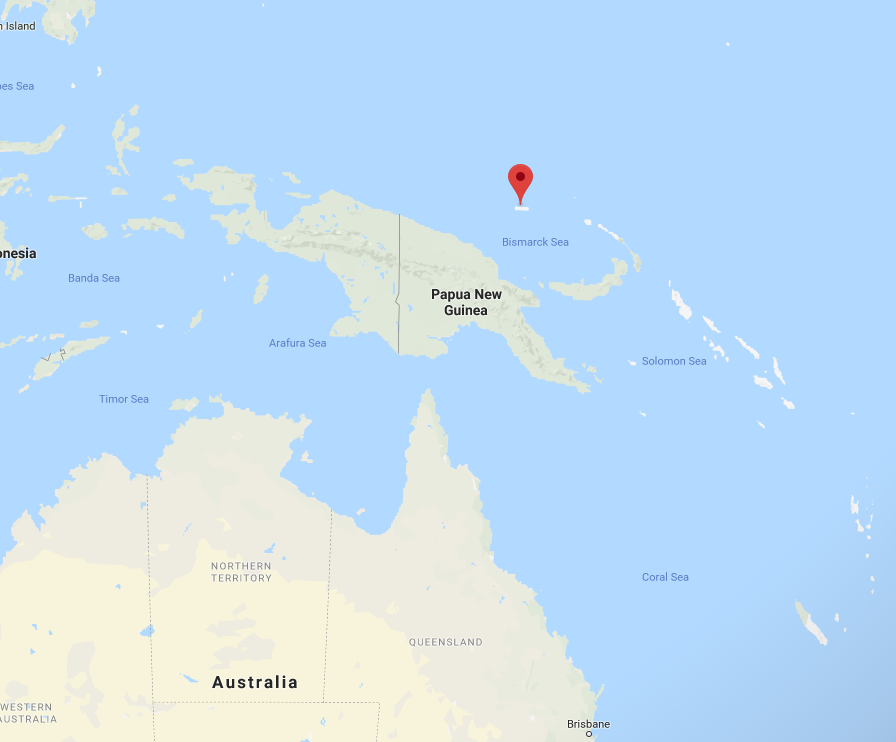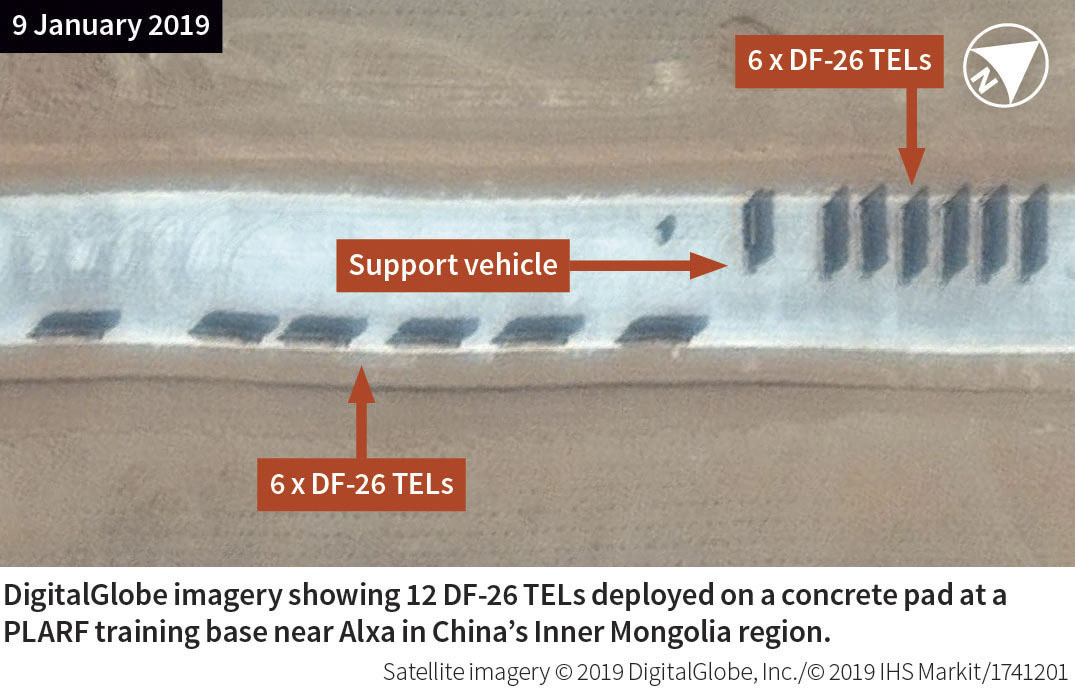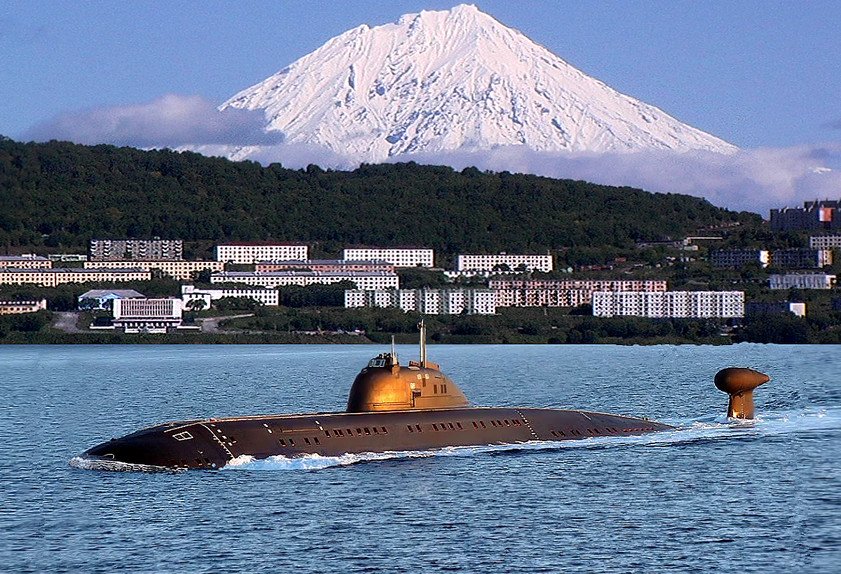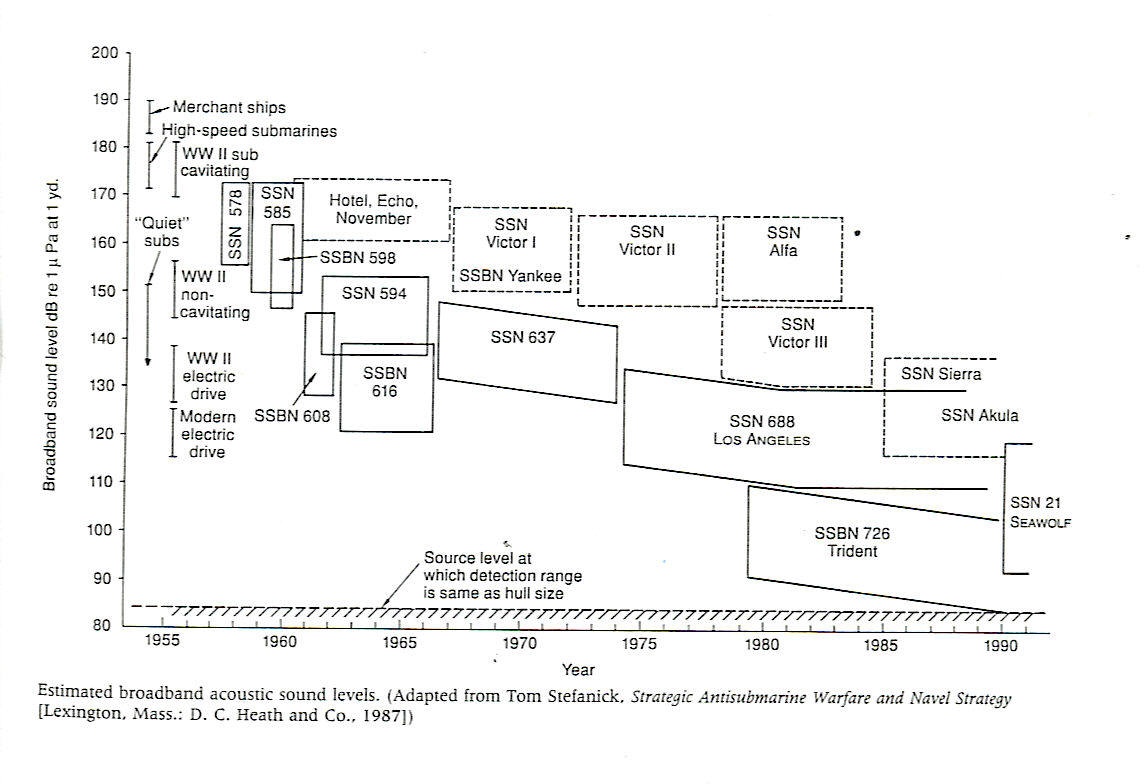
Begging pardon for my tangential musing..


Okinawa is also a political hot potato, daily protests by residents against the air bases and overflights.Singha wrote:same dor okinawa which is a major usmc and fighter base
The troops aren't going anywhere. There is relocation which will happen but as long as there is a security alliance there will be a presence in Okinawa given its importance which is probably right at the top in the region right up there with Yokosuka and Guam.Kashi wrote:Okinawa is also a political hot potato, daily protests by residents against the air bases and overflights.Singha wrote:same dor okinawa which is a major usmc and fighter base
To clarify, DDG-85 sailed within 12 nautical miles which is not the first time but slightly different form the FONOP in November and compared to other FONOPS in the region by other Navies.China has increased the rhetorical heat against US naval presence in the Western Pacific. Michael Fabey reports on the rising risk in the region
While few US naval strategists and analysts believe China would now actually try to attack and sink one or two aircraft carriers to keep the US from conducting freedom-of-navigation operations (FONOPs) in the Western Pacific – as a Chinese military official recently suggested publicly – there is growing concern that the at-sea clashes between the two superpowers in the region will not only increase in number but escalate into a physical confrontation.
Speaking on 20 December at the 2018 Military Industry List summit in Shenzhen, Major General Luo Yuan (retd), deputy head of the Chinese Academy of Military Sciences, said China could resolve its disputes with the US in the South China Sea by sinking an aircraft carrier or two, according to Taiwan’s Central News Agency (CNA). Luo is known to harbour hawkish attitudes towards the US.
Citing the Chinese arsenal of anti-ship ballistic and cruise missiles, Luo said China could indeed strike and sink the ships, killing 5,000 in each carrier strike group and alarming the US, which, he said, fears casualties above all else.
While China possesses weapons to put US Navy (USN) carriers and other ships at risk, navy officials have long argued that its biggest ships are no more vulnerable now than they were to previous threats through the years, when all technological offensive and defensive assets weighed against each other on the scales.
And while analysts and strategists say China may be willing to physically attack a USN ship, given the right set of circumstances, none say they think Chinese officials would be willing to do so simply to stop those vessels from performing FONOPs.
Furthermore, analysts contend that China has no intention of attempting to sink a US carrier now as there is broad acknowledgment that such an attack would only provoke the US, leading to a bloody war neither country desires nor can afford.
“From that point, there is no turning back,” Bryan McGrath, managing director of the consultant FerryBridge Group, told
Jane’s
Nevertheless, there is plenty of messaging behind not only the recent carrier-sinking threat, but also other recent public Chinese calls to attack US ships, complaints about US FONOPs, and increased at-sea confrontations.
In addition, analysts say, some of the comments may be directed at Chinese citizens as a rallying cry to rekindle nationalism while the US and China engage in talks to end trade battles.
“The PRC [People’s Republic of China] hive is in disarray and feeling the pressure right now,” Jerry Hendrix, vice president of defence consultancy Telemus Group, told Jane’s. “The sanctions and trade war have begun to impact their economy; they are not creating enough jobs any more due to a slowdown in their growth as well as the impacts of the trade negotiations. The communist party is facing the potential of either giving in to the Americans or trying to figure out how to distract their populace. They may try some nationalist rhetoric to see how it plays on their streets.”
While China has the muscle to theoretically back such threats, Hendrix said, “I think this is a distraction, but I felt they needed to send a warning [to reign in US FONOPs and similar patrols].”
Chinese officials have fired several warning shots across the USN Western Pacific force’s bow recently.
At the end of November 2018, for example, China lodged what it called “stern representations” with the US after the guided-missile cruiser USS Chancellorsville (CG 62) sailed near the Paracel Islands to challenge what the US Pacific Fleet called China’s “excessive maritime claims”. China said Chancellorsville entered Chinese waters without permission, forcing the Chinese navy to send ships and aircraft to monitor the cruiser’s patrol and to warn it to leave.
Early the following month, the tabloid
Global Times quoted Dai Xu, president of the Institute of Marine Safety and Cooperation and a colonel commandant in the People's Liberation Army (PLA) Air Force as saying on 8 December, “If the US warships break into Chinese waters again, I suggest that two warships should be sent: one to stop it, and another one to ram it.”
And, on 7 January, the US Pacific Fleet acknowledged that guided-missile destroyer USS McCampbell
(DDG 85) sailed into contested waters just 12 n miles from the Paracel Islands as part of a FONOPs. Once again, Chinese officials said they had lodged stern representations in protest.
The USN has executed such FONOPs in the Western Pacific – as it has around the globe – for decades and analysts are trying to understand why China is more aggressively pushing back now.
Besides the current trade war between the two countries, naval strategists note that the US is facing internal political upheaval now and China may see this as a time of weakness. Given the departure of James Mattis as defence secretary, there is concern in some quarters that the new National Defense Strategy naming China as a competitor could be in jeopardy – although acting defence secretary Patrick Shanahan has re-emphasised the Pentagon’s focus on China.
Also, the US Pacific forces are being led by relative newcomers to the region and China may be testing that leadership while boosting Chinese confidence in its own naval prowess.
However, analysts warn, it would be wrong to discount the threats as mere messaging. While it is extremely unlikely China would decide to take out a carrier, Chinese naval forces could opt for a more physical confrontation with smaller US warships. Either way, the USN is not going to be deterred from its FONOPs and other regional operations.
“US forces operate in the Indo-Pacific region on a daily basis, including in the South China Sea,” USN Lieutenant Rachel McMarr, Pacific Fleet spokesperson told Jane’s . “All operations are designed in accordance with international law and demonstrate that the United States will fly, sail, and operate wherever international law allows.
“That is true in the South China Sea as in other places around the globe. We conduct routine and regular FONOPs as we have done in the past and will continue to in the future. FONOPs are not about any one country, nor are they about making political statements.”
The troops are not going anywhere, because the Japanese government is firmly behind the Henoko relocation, work having already started. But the local populace is fiercely opposed to this, given the near daily protests and local elections being won by candidates opposing the move.brar_w wrote:The troops aren't going anywhere. There is relocation which will happen but as long as there is a security alliance there will be a presence in Okinawa given its importance which is probably right at the top in the region right up there with Yokosuka and Guam.
Right and this is why I said that politically, the strategic presence at Okinawa is safe and the US presence is not going away from there.Kashi wrote:
Of course none of this is unlikely to change the situation, but it's a distraction that both US and Japanese governments can do without.
The bot video aside, here is an OSINT analysis on the DF-26 deployment from Jane's Sean O' Connor:Neshant wrote:I got killaz on my payroll
---------------------
Beijing announces deployment of 'carrier killer' after US warship sails near South China Sea

DigitalGlobe imagery captured on 9 January shows 12 DF-26 intermediate-range ballistic missile (IRBM) transporter-erector-launchers (TELs) at a previously undisclosed training range of the People's Liberation Army Rocket Force (PLARF) located north of Alxa in China's Inner Mongolia region.
The training range at Alxa was constructed between 2016 and 2018. It features a garrison complex, a probable missile storage and handling facility, and over 100 prepared launch positions.
The DF-26 TELs were sighted on a concrete strip resembling a small airfield. The strip was constructed between May and November 2018 and represents a possible marshalling area for TELs preparing to disperse within the launch area.
The large number of prepared positions and relatively sparse garrison complex suggest that this facility is a probable training range. Various types of launch pads allow for the deployment of different missile types such as the DF-16 seen within the garrison in imagery captured on 16 August 2017.
Garrison complexes for operational missile brigades are typically much larger, featuring barracks and other support facilities.
Analysis
On 9 January the Chinese state-owned
Global Times newspaper reported that the DF-26 had been "mobilised to Northwest China's plateau and desert areas” after USS McCampbell, a US Navy Arleigh Burke-class guided-missile destroyer, conducted a freedom-of-navigation operation (FONOP) near the disputed Paracel Islands on 7 January.
While Inner Mongolia does not seem to coincide with 'Northwest China', the timing of the DF-26 sighting suggests that the Alxa deployment is that mentioned in the Global Times
report.
The TELs were not present in subsequent imagery captured on 10 January, indicating that they were possibly dispersed among the launch positions north of their 9 January position. 10 January imagery coverage precludes conclusive locating of the DF-26 TELs as neither the northern launch pads nor the garrison complex were covered.
Deployment of the DF-26 to Alxa would place the area around the Paracel Islands within range of the missile.
A force that ran away from Sudanese irregulars and government who wouldn’t blood its armed forces in 40 years would suddenly have the guts to attack Unkil’s carriers?Rakesh wrote:The Chinese are living in fantasy land if they think they can attack a US Navy aircraft carrrier and get away with it. They seriously believe their hype of their military capabilities.
China is betraying a level of strategic anxiety not yet seen as the impact of trade tariffs looms and its return to its historical power role in the Asia seems to have stalled.
On Dec. 20, Chinese Rear Adm. Lou Yuan, while speaking at a military trade conference, announced that what the United States feared most was casualties and that the easiest way to defeat China’s main rival was to sink two American supercarriers, killing over 10,000 sailors in the process. When that has happened, Admiral Lou announced, then “we’ll see how frightened America is.”
Lou’s statements were followed just a few days later by China’s president, Xi Jinping, who threateningly said China “reserves the option of taking all necessary measures” to ensure “peaceful reunification” with Taiwan, a democracy that has governed itself apart from China since 1949. Xi added that Beijing was willing to “fight the bloody battle against our enemies,” and menacingly predicted: “Reunification is the historical trend and the right path, Taiwan independence is ... a dead end.”
This is a stark escalation of language. Taken with other examples of bellicose rhetoric that have increasingly issued from Beijing officials, it is clear that Xi Jinping and his supporters have been badly rattled by the recent events.
China’s leaders assumed after the 2008 global financial crisis that the Communist, centrally controlled economic state’s time had come. It would regain its historic role in the region. It could cast off the cloak of a peaceful rise to assume a hegemonic role in the Asia-Pacific region.
But Xi and his followers have watched their diplomatic, economic and military initiatives come up short, engendering increased resistance from other Indo-Pacific nations rather than the realignment China had expected. Now the Trump administration’s trade tariffs threaten to destabilize the Chinese economy, resulting in a cascade failure of Xi Jinping’s broader strategy and threatening to undermine the legitimacy of the Communist Party, hence the stronger and more strident attacks.
China’s desperate attempts to regain the momentum, however, betray an ignorance of the American culture.
China perceived the lack of strategic focus of the George W. Bush administration and the passive “lead from behind” foreign policy of the Obama administration as American decay and decline. In reality, the foundational aspects of the American economy remain surprisingly strong and the American fighting spirit is not dead -- merely sleeping. Those who would believe that the sinking of two aircraft carriers would trigger an impulse toward retreat would do well to make themselves aware of the United States’ history and the impact events such as the sinking of the Lusitania, the attack on Pearl Harbor and the collapse of the World Trade Center had on the national psyche. What some have labeled the Jacksonian impulse could be described as a tendency toward great power rage. To be sure, it burns itself out. After all, the U.S. is considering leaving Afghanistan, 17 years later.
But make no mistake: Any attack upon a single U.S. aircraft carrier by long-range aircraft, cruise missiles or ballistic missiles would surely generate a response against the bases from which those weapons were launched, the sensors associated with them and the command-and-control nodes that directed them, and then the United States would turn its attention on the Chinese naval and merchant fleet.
Before China knew what was happening, it would be cut off from the overseas sources of energy and raw materials that fuel its import/export economy. Within weeks it would be without fuel and its factories would be shuttered. The American economy, established in a nation that has most resources domestically available, would be able to ride out the storm, even if China attempted to climb the escalation ladder and attack targets in North America.
For China, it is better to get its more bellicose voices under control and approach the bargaining table with the United States over trade issues in good faith and with an openness to real compromise on the economic issues that divide our two nations, rather than resorting to nationalist saber rattling.
Xi Jinping should try harder to understand his real strategic position while remembering that he who rides the tiger finds it difficult to dismount. There will be no return to global hegemony or Middle Kingdom status. China brought its candle out from under the basket too soon, and its broader, aggressive ambitions have been revealed.As for the United States, it should follow the lead of President Trump and his new acting Secretary of Defense Patrick Shanahan, who between them have identified that we are in an era of great power competition that will require more effort and that the focus of that competition is China, and China and China.
https://www.foxnews.com/opinion/china-s ... -americans

On January 9, 2019, at the Algerian Naval Base, the Navy of the Algeria, in the presence of the Chief of the General Staff of the National People’s Army of Algeria, Army General Ahmad Gayd Salah, was held at the Algerian naval forces of two Project 06361
submarines. Admiralty Shipyards "in St. Petersburg, respectively, October 2, 2018 and November 27, 2018.
The submarines received the Algerian airborne numbers "031", "032" and the names " Ouarsenis" , and "Hoggar" (Hoggar).
As previously reported by bmpd colleagues , two submarines of this project were ordered by Algeria in Russia under a contract signed in June 2014.
The number of submarines of this type in the Algerian Navy has reached 4 units. Performance characteristics of the project 636.1: Surface displacement - 2350 tons, underwater - 3120 tons.
Dimensions: length - 73.8 m., Body width - 9.9 m., Width with stabilizers - 12.8 m, draft - 6.2 m.
Immersion depth: working - 240 m, maximum - 300 m.
Diesel-electric power plant with full electric propulsion consisting of:
- 2 diesel generator DG-1500 type 4DL-42M capacity of 1500 kW.
- 1 PG-141M electric motor with 5800 hp power. (4050 kW).
- 1 electric motor of economical stroke PG-142 with 150 hp power. (95 kW).
- 2 groups of batteries of 120 elements type 446-1.
The propellers are a 6-blade propeller, 2 water cannons with PG-140 electric motors with 102 hp each. Travel speed: surface - 11 knots., Underwater - 20 knots., Economic - 3 knots.
Cruising range: under the RDP - 7500 miles (at a speed of 7 knots.), Under water - 400 miles (at a speed of 3 knots).
Autonomy - 45 days.
Crew - 52 people.
Armament: 6,533-mm bow torpedo tubes with a quick-loading device, ammunition - 18 torpedoes or 24 mines. As an option of loading can be used PKR «Club-S» (PKR 9M54E and 9M54E1, KR 9M14E), launched from torpedo tubes. For self-defense on the surface in sealed fenders in the fencing of the felling, 6 missiles of the Igla MANPADS are located.

hnair wrote:Xi seem like have a google calendar alert saved, that says “give speech for be prepared for war” to popup in his Mi phone every quarter, along with “mother-in-law’s birthday”, “soak marinade for Chinese new year BBQ” and “Post meme against Dalai Clique”

uddu wrote:They don't have to attack. They can disrupt by putting numbers and doing wresting with the U.S fleet..all without firing a single shot but playing with loudspeakers. They can bring out their outdated ships that are kept in junkyard and put them in front of those U.S carrier fleet, criss crossing and even letting a collision. In that process if the U.S navy gets damaged..who loses? Surely not the Chinese.
The ghost in the Fitz’s machine: why a doomed warship’s crew never saw the vessel that hit it
By: Geoff Ziezulewicz 3 days ago
...
After gazing at the gash in the hull through which gushed the seawater that drowned the Fitz’s dead, Fort and his team of investigators walked to the destroyer’s electronic nerve center, the combat information center everyone calls the “CIC.”
It hadn’t taken a direct hit from the bow of the Philippine-flagged ACX Crystal, but it was trashed nonetheless and smelled like urine.
He found a pee bottle that had tipped and spilled behind a large-screen display. Fort’s eyes started to take over for his nose, and he took it all in.
“There was debris everywhere,” Fort said under oath. “Food debris, food waste, uneaten food, half-eaten food, personal gear in the form of books, workout gear, workout bands, kettlebells, weightlifting equipment, the status boards had graffiti on them.”
“I’d never seen a CIC like that in my entire time in the Navy,” the surface warfare officer of more than 25 years recollected.
...
Designed in part to help federal attorneys defend against a wave of lawsuits from the owners and operators of the ACX Crystal and, indirectly, the families of the Fitz’s injured, traumatized and drowned, the Navy sought to keep Fort’s findings from the public.
But Navy Times obtained a copy of it and began stitching his details to a growing body of court testimony by the crew of the Fitzgerald to reveal just how much worse conditions were on the destroyer than the Navy previously shared with the public.
What it all reveals is that a mostly green crew joined the Fitzgerald shortly after the warship left dry dock maintenance in early 2017.
They learned to make do with broken equipment, a lack of communication between departments and, especially in the CIC, a world in which failure had become “systemic across the board,” as Fort put it at last year’s hearing.
Or as his secret report described it, a lack of training in basic seamanship fatally combined with material deficiencies to create “a culture of complacency, of accepting problems, and a dismissal of the use of some of the most important, modern equipment used for safe navigation.”
The crew were simply "living in a world that had been accepted,” Fort said.
...
Much of Fort’s report explores how a state-of-the-art warship outfitted with expensive electronic sensors could go blind, but a key finding soon emerged: It wasn’t merely that they didn’t know they were blind. They didn’t know how to see.
Beyond the human waste and garbage collecting in the CIC, Fort’s investigators found CIC watchstanders who “demonstrated a lack of knowledge about radar functionality and material condition.”
Although the Fitz’s SPS-67 radar was listed as operational on the eve of the collision, it had actually fallen into a “degraded status,” according to the report.
CIC watchstanders couldn’t use their remote control to guide it because it also was broken.
A dead radar control button had been “covered by a piece of masking tape,” but Fort’s investigators couldn’t locate a casualty report chronicling the malfunction.
A work order had been generated to order, install and test new control buttons.
That was 194 days before the collision, Fort found.
...
On the night of the ACX Crystal disaster, the SPS-67 radar seemed plagued with gremlins but no one was available to fix it and sailors didn’t talk to each other about the electronic “clutter” they watched on the display, according to Fort’s report.
Beyond talking to each other inside the CIC or conversing with the bridge during their watch, the sailors there also had “zero communication” with other onboard departments for vital tasks like turning the radar, Fort later testified.
“Most of these folks we interviewed were not even aware that the radar-set controller was out of commission or what functionality they did or did not have, or what ability they had to even control it,” he said.
While the crew could’ve turned to an auto-track feature on the SPS-67 radar, they didn’t use it “because they ‘don’t want to mess it up,’” the report states.
“It was generally accepted that using the auto-tracking feature caused problems with the radar, and so it was just turned off,” Fort added during the hearing. “And folks accepted that.”
That’s why a CIC petty officer worked in manual mode, punching a button 1,000 times in an hour just to track four of five vessels, when the radar could’ve auto-tracked 50 contacts for him, Fort testified.